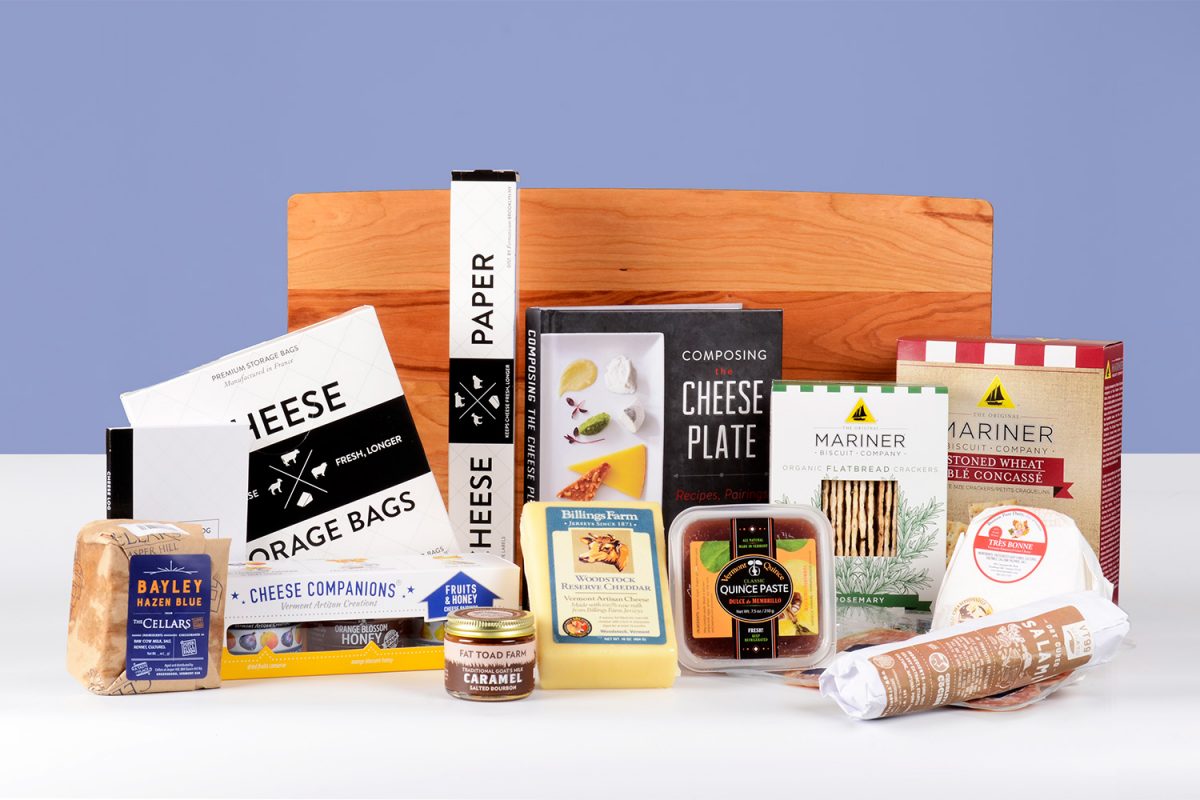Photo taken in our studio.
If you are considering starting a specialty food business or are at the first stages of your launch, this article is for you. I hope I can help you to prepare better for what’s ahead. I hope you can avoid some of the mistakes I made. I am here to help!
For three years, I owned and operated a small food business (Cheese Companions, cheese accompaniments). I managed all aspects of the operations.
This 2-part article relates my experience with Cheese Companions:
- Part 1: 31 Lessons Learned: Small Food Business discussed the lessons learned in the areas of pre-launch research, product development, production, and finances.
- Part 2 covers tips and recommendations in the field of marketing and distribution in a quick bullet point format.
I realize that the approach in part 2 is different than in part 1, probably because marketing is my area of expertise. In this article, I spontaneously share my marketing philosophy, whereas part 1 was much more about lessons learned in areas I was less familiar with. So, here we go!
Note: Cheese Companions’ business is for sale if anyone is interested!
A. MARKETING OFFLINE
Branding your food product
- What is branding: Branding is the process of creating a unique image and personality for your product, through every element of communication, from your packaging to your advertising, website, social media, packaging, etc.
- Branding and packaging: In part 1, we already touched on the importance of a professionally-looking packaging. The packaging is a crucial piece of your communication platform. Your product is all alone on the shelf, telling the consumer why he should buy it. If it looks amateur, you missed your chance of a strong first impression! Remember, we are talking about food. Trust is paramount, and “amateur-looking” simply won’t cut it.
- Branding and storytelling: I am a strong advocate of storytelling in branding and product marketing. I believe that beyond good quality and good taste, a food product can sell the owner’s story, a philosophy and vision, or a dream. Here are some examples:
- Two Quebec spice companies (Épices de cru and Beaulieu): Both are owned by people with great personalities and charisma (whom I had the chance to meet). But Beaulieu focused on selling products, whereas Épices de cru shares the lives and travel of its owners. On social media, we can see them trekking for spices around the world. I firmly believe that this is part of their success. They are selling the dream of exotic travels, and we connect with them as human beings with charismatic personalities. Because of it, they also get many public relations opportunities.
- Régine Café and Janine Café brunch restaurants: not everyone has the charisma of Ethné et Philippe from Épices de cru, but we can all tell inviting stories. Take Régine Café, a brunch place in Montréal. I love their branding. The owner decided to create the imaginary persona of a loving aunt who would spoil and pamper you. Régine Café was going to be the home of that old aunt or grandmother. And that aunt talks to customers in her own words in every social media communication! Brilliant! No wonder the place is one of the best-renowned brunch places in Montréal. More on that story in our article: Online Success Story: Régine Café.
- You won’t get a second chance to make a strong first impression: Of course, your product still has to “deliver” in terms of taste, market needs, and differentiation. And the other aspects of your marketing mix have to be on target as well. But it does start with strong branding.
Shows, Markets & Festivals
- Fancy Food Shows: When it comes to specialty food in the USA, every start-up wants to be part of the Fancy Food Show! But it can be a mistake. Exhibiting too early in the company’s growth path can be quite costly and unproductive. Doing it without an impactful display or an extensive reach out before the show can also be disastrous. Remember that at the New York Summer Fancy Food Show, you will be one out of thousands of exhibitors from more than 50 countries. To learn more about how to have a productive show and if you should exhibit, read: “17 Tips for a Successful Fancy Food Show” and “Should You Exhibit at the Fancy Food Show? 6 Must-Haves.”
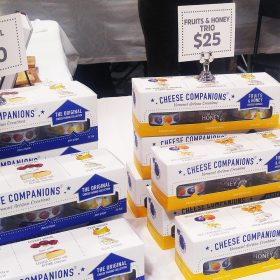 Christmas festivals: If your food product can be a lovely gift, Christmas festivals are an excellent opportunity to get a high volume of sales. Cheese Companions attended the Boston Christmas Festival. Again, standing out and solving customers’ needs is essential. You also need to maximize your sales potential by understanding the ROI (return on investment) per product and per square inch of space on your table. And your financial analysis must include all costs for the show, as you may get a high volume of sales, but with a low profit. Read more on Christmas festivals in our article “26 Tips: How to Be Successful Selling Specialty Food at Christmas Festivals.”
Christmas festivals: If your food product can be a lovely gift, Christmas festivals are an excellent opportunity to get a high volume of sales. Cheese Companions attended the Boston Christmas Festival. Again, standing out and solving customers’ needs is essential. You also need to maximize your sales potential by understanding the ROI (return on investment) per product and per square inch of space on your table. And your financial analysis must include all costs for the show, as you may get a high volume of sales, but with a low profit. Read more on Christmas festivals in our article “26 Tips: How to Be Successful Selling Specialty Food at Christmas Festivals.”- Grants for trade shows: If you decide to participate in a trade show, make sure to check if your state offers grants for such participation. Also look at U.S. commerce, if the show is abroad. Such grants can also cover packaging, marketing materials, etc. Check the U.S. Commercial Services.
B. DIGITAL MARKETING (ONLINE)
E-commerce for food
- A growing market: It was first hard to conceive that people would buy groceries online. However, as shown in these two articles, “The Changing Market for Food Delivery” and “The Online Grocery Report“, the online grocery shopping and the delivery market has seen decent growth in the past few years.
- Reaching broader audiences: if your product is difficult to find in local stores and if it is cheap and easy to ship (e.g., unusual spices or natural products), having an online store is a must. It considerably broadens your customer base beyond your region.
- The gift market for specialty food: if your product can be a gift, this is a great opportunity. My experience is that people are more willing to buy something that they have not tasted for their friends and family than for themselves. I am not kidding! And they love to send gifts without the hurdle of shipping them. For that gift market, it is essential to have great looking packaging and to offer gift combos and baskets. You can sell gift certificates in your online shop. The brunch restaurant Régine Café I mentioned earlier has been quite successful with those.
- Offering pickup and delivery options: Whether you are a restaurant like Régine Café or a small food business, you can also set up your online shop for pickup and delivery (see our step-by-step guide for setup in WooCommerce).
- Getting customer feedback: As a small business, it is not always easy to get customer feedback. An online store is an excellent opportunity to do so. You can track your best selling products. You should ask customers to write reviews. It is valuable feedback for you, and it builds customer trust, reassuring future buyers that they are making the right purchase.
- Upselling & cross-selling: Online, you also have a unique opportunity to upsell (customer buys a more expensive product) and cross-sell (customer buys complementary products). Amazon is an expert at those techniques, but e-commerce applications make this extremely simple to implement, even for the small business. For each product, customers will see a few other relevant products they can choose—a great way to increase the cart value.
- Simple e-commerce platforms: Every small food business can have an online store as sophisticated as large companies (almost!). It is incredible when you think of it. You can easily set up reviews, related products, gift certificates, shipping, and payment options.
Online Presence: Website & Social Media
- An online marketing strategy a must: Thousands of books about online marketing exist. People follow the latest trends without always knowing if it is the right thing for them to do. Or if it is realistic for their small business to spend hours on social media, for instance. Building an online marketing strategy with a solid rationale is essential.
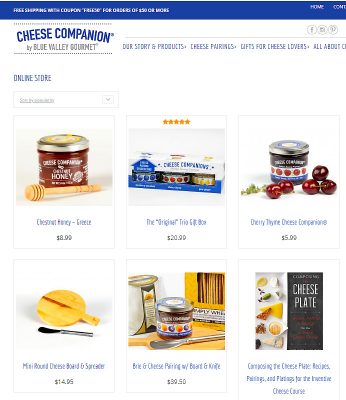
- Your website is your top salesperson: It is the place where you can tell your story, share testimonials and reviews, inform customers about your products and retailers, and have an online shop. You can make it simple or more elaborate, but it remains the first place where customers will look for more information about your products.
- Professional photography sells: An Etsy study found that 90% of online buyers say that photo quality is the most critical factor in an online sale (Etsy study). Read: “How great product photographs influence e-commerce website conversions.” Your product photography is not something to be taken lightly. We recommend hiring a professional photographer. But here are some tips if you want to start on your own: “Food Photography: 10 Simple Tips for Beginners.”
- Blogging, Facebook, Instagram, Youtube, podcasting – what to choose: That topic deserves its own article. Studies show that online visitors love videos. Podcasting is expanding in popularity. Marketers may view blogging as something of the past. Social media is booming, but the content on these platforms is visible only for a fleeting moment (versus your blog posts which get read for years.) So, the first question to ask yourself before jumping into one of those tactics is: How much time do I have to create such content? Which medium am I the most comfortable with? Which outcome do I want? Which medium is the most appropriate for my products, my goals, and my audience? More on blogging in this article: “Julie & Julia – 8 Keys to Julie’s Food Blog Success.”
- Create a tribe of loyal followers, influencers, and ambassadors: They can significantly expand your marketing presence, something which is essential when you have a small business and limited time to dedicate to marketing. So make sure to identify and cherish them.
Giveaways
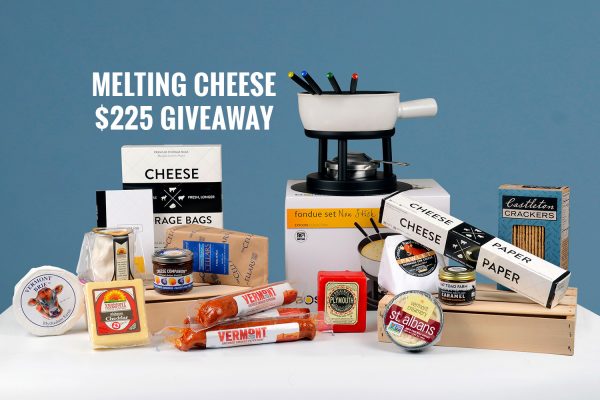
- A risky tactic: In 2017, for the Cheese Companions, I implemented a campaign of three sweepstakes, in which I partnered with local Vermont cheesemakers and offered amazing cheese plates, each worth $250. If they were highly successful in terms of participants, they had poor results in customers’ interest beyond the giveaway and were even detrimental when it came to email lists. Many respondents unsubscribed later or tagged us as spam. Conclusion: I cannot recommend this tactic and would not do it again, as I am not sure how to avoid “professional” sweepstakes participants getting involved. You can read the lessons learned in this blog article: “9 Marketing Lessons from a Sweepstake Campaign.“
DISTRIBUTION
Deciding Where You Sell
- Understand where your customers buy: It is very tempting to want to sell locally and at farmers’ markets first. But farmers’ markets are often not worth the cost: go and sit for one hour at the entrance of your local farmers’ market and watch what people have bought and how much they bought. Trust me: it is very revealing. I have done it in Montpelier, VT, where most visitors just wandered around on a lovely sunny Saturday morning. And depending on your product and where you live, only selling in your region might be a crucial mistake. If your product is for an urban, upscale, trend-setter customer and you live in a low income, rural area, your local sales volume will give you the WRONG feedback about your product’s potential. Be careful though: out-of-state sales require FDA registration.
Retailers, Wholesalers, Merchandising, Shipping
-
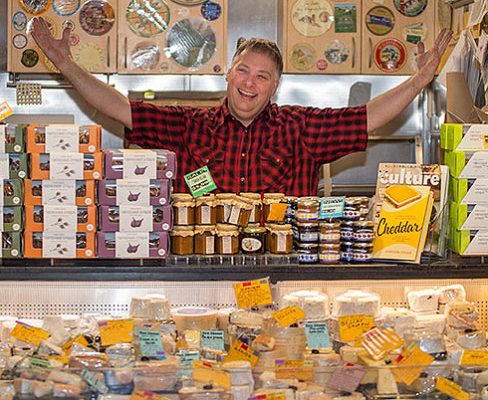
Photo courtesy of Rainbow Grocery, San Francisco, one of our retailers Product placement in stores: We discussed in part 1 of this article how important is your product placement in the store. I have found that it often requires discussion with independent retailers to get the optimal location to maximize product turnover.
- Frequent in-store visits: Store visits are essential. They are one of the advantages of self-distribution. They help you to understand which SKUs sell better, check on damaged products, do some merchandising (rearranging products, replacing shelf-talkers), discuss product location, and maintain relationships with store owners.
- Don’t trust retailers to know what sells: My experience with independent retailers and department heads in supermarkets is that the orders they place don’t reflect the actual turnover of the different SKUs you offer. They may ask for a case of each SKU, when, in fact, one of the SKUs sells three times more than the others. Therefore you must keep track of previous orders to understand SKU turnover and discuss the order with the retailer. However, I cannot comment on large retailers or chains, which have sophisticated inventory software.
- The Whole Foods’ trap: Every new food start-up dreams of seeing their product on Whole Foods shelves. But it has led some successful manufacturers to go literally out of business. Contracts will leave you with tight margins, but large order requirements. You may need to buy expensive equipment to scale up. Then Whole Foods may decide to stop buying after a short period if the product doesn’t sell enough. It does happen. Additionally, just the cost of onboarding is not negligible: Whole Foods requires you to pay for a third-party audit costing more than $1,000 with no guarantee of a contract.
- Is a distributor the right solution for you: You may think that distributors are the solution to reach more retailers and increase sales. But the fact is that it comes at a high cost and is not always be the right solution. Distributors may place large quantities of products in stores when you initially sign up with them, which will require you to manufacture in high volume, but they may not follow up with those retailers later. With distributors, you also miss the opportunity to stay in contact with your retailers, understand how your product is merchandised and sold.
I know manufacturers who have sold across the country directly to stores very successful. That means that they had shipping costs, but did not have to give away large margins to distributors. My recommendation: start with self-distribution to understand your customers and proceed with caution. As an alternative, some companies also offer delivery services to your existing retailers.
- Understanding shipping costs: Packing and shipping costs may have quite an impact on your finances. As we saw in part 1 of this article, they vary greatly depending on your product (fragility, storage temperature). Then they differ from one shipper to another. It is worthwhile taking some time to study the various rates. USPS (U.S. Post Office) has this great slogan “If it fits, it ships.” This shipping solution can save you a lot of money. They also have some low regional rates, for which you need to order boxes online. My experience is that for small or standard packages, USPS offers better rates, whereas, for larger packages, UPS is a better solution. I also found that there seems to be higher breakage with USPS than with UPS. Read more about shipping food in our article “How to Manage Shipping in Your Food Online Shop.”
Tastings
- Don’t underestimate the importance of tastings: One salesperson told me one day: “sample, sample, sample.” I could also say: “tasting, tasting, tasting.” Even if it seems costly to give samples with every order, it does make a difference in the level of sales for a new product: consumers want to learn for themselves that they like the product taste. Make sure to write “sample” on your samples, though. I have seen retailers sell them or use them for themselves.
- Don’t overestimate what the retailers can do in terms of tastings: Retailers are busy. They don’t always have the time to set up your product for tasting, nor the space to do it. So even though they can be helpful, you cannot entirely count on them and must organize your own tastings. You are the best salesperson for your product anyway.
That concludes part 2 about sharing my experience with a specialty food start-up. There is much more to say about running a small food business. But I hope that this has been useful. Don’t hesitate to leave me a comment. And make sure to check part 1 on pre-launch research, product development, production, and finances.
Further reading:
Disclosure: As an Amazon Associate, I earn from qualifying purchases.
-
From Kitchen to Market – Sell Your Specialty Food: Market, Distribute, and Profit from Your Kitchen Creation, 6th Edition – Stephen Hall
- How to Make a Profit Creating & Selling Your Own Specialty Food Producers in the USA, Second Edition
- Starting a Part-time Food Business: Everything You Need To Know To Turn Your Love For Food Into A Successful Business Without Necessarily Quitting Your Day Job
- Good Food, Great Business: How to Take Your Artisan Food Idea from Concept to Marketplace
- Getting Your Specialty Food Product Onto Store Shelves: The Ultimate Wholesale How-To Guide For Artisan Food Companies

